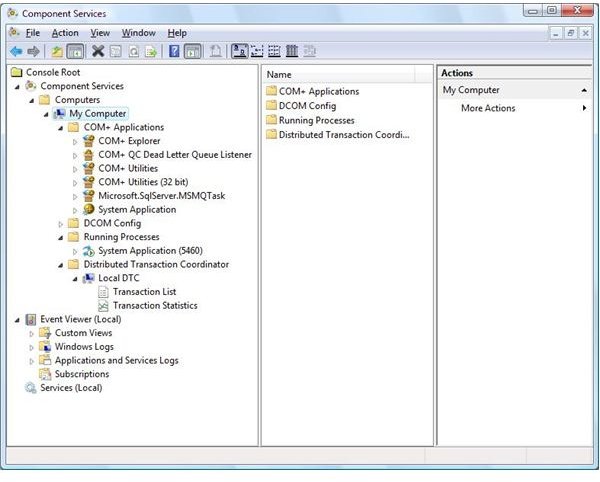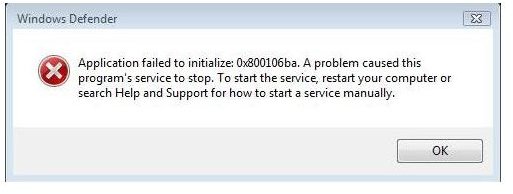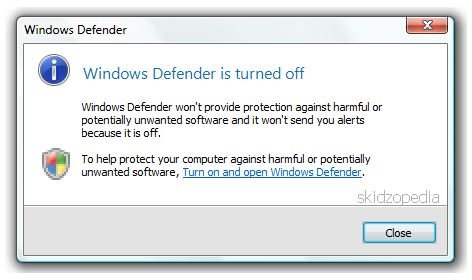Windows Defender Won't Start? How to Start Windows Defender Manually
Why Windows Defender Stops Working
Here are some of the reasons why Windows Defender may stop working, or encounter problems when trying to restart:
- A virus infection may have changed registry settings and Windows Defender is unable to operate or start.
- Antivirus software has been installed and then removed, but its settings are still present preventing Windows Defender to start.
- Windows operating system files have been corrupted. If this is the case, type “sfc /scannow” at the Command Prompt for automatic repair.
- Windows Defender has been manually disabled.
- You are probably using a non-genuine copy of the Windows operating system that has been tampered with, such as the Windows Vista “Black Edition."
- You are using a non-genuine copy of the Windows operating system and automatic updates have been disabled, or Service Packs were never installed.
How to Start Windows Defender Manually

You need Administrator Privileges to do this.
- Click Start and type “Services” at the Search Programs and Files field – Simply press enter.
- The Component Services window will open. On the left-hand side, click on the “Services (Local)” tab.
- On the right-hand side, you will see a list of Windows services. Scroll down until you see the Windows Defender service.
- RIGHT-CLICK Windows Defender and click on “Proprieties”.
- Under the “General” tab of the “Properties” window, set the Startup type to “Automatic (Delayed)”.
- Under Service Status, it will show: “Stopped”. Click on “Start”, and manually start Windows Defender.
- Click Ok, and close the Component Services window.
The Windows Defender “Error Code 0x800106ba” (According to Microsoft)

Uninstall Windows Defender, and then reinstall Windows Defender. To do this, follow these steps:
- Click Start, click Run, type appwiz.cpl, and then click OK.
- Click Windows Defender, and then click Remove.
- Follow the prompts to uninstall Windows Defender.
- To reinstall Windows Defender, visit the following Microsoft Web site here.
If this issue is not resolved after you complete step 1, uninstall Windows Defender, use the Windows Installer CleanUp utility, and then reinstall Windows Defender. To do this, follow these steps:
- Click Start, click Run, type appwiz.cpl, and then click OK.
- Click Windows Defender, and then click Remove.
- Follow the prompts to uninstall Windows Defender.
- To use the Windows Installer CleanUp utility, click here.
- To reinstall Windows Defender, click here.
If this issue is not resolved after you complete step 2, follow this step:
-
Click Start, click Run, type regsvr32 file name, and then click OK.
Note In this step, file name is a placeholder for the following files.
Repeat this procedure for the following files:
- wuapi.dll
- wuaueng.dll
- wucltui.dll
- wups.dll
- wuweb.dll
- atl.dll
- softpub.dll
- wintrust.dll
- initpki.dll
- mssip32.dll
If everything else fails, keep in mind that a copy of even more advanced Antivirus software can easily replace Windows Defender. The frustration of not having an “apparently” crucial component of your operating system will soon be forgotten after you disable its alerts within the Security Center.
